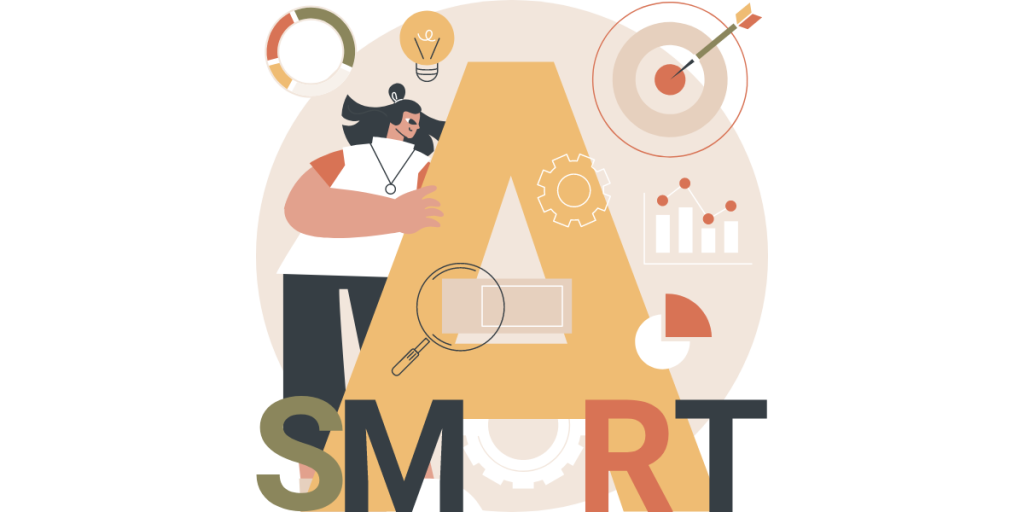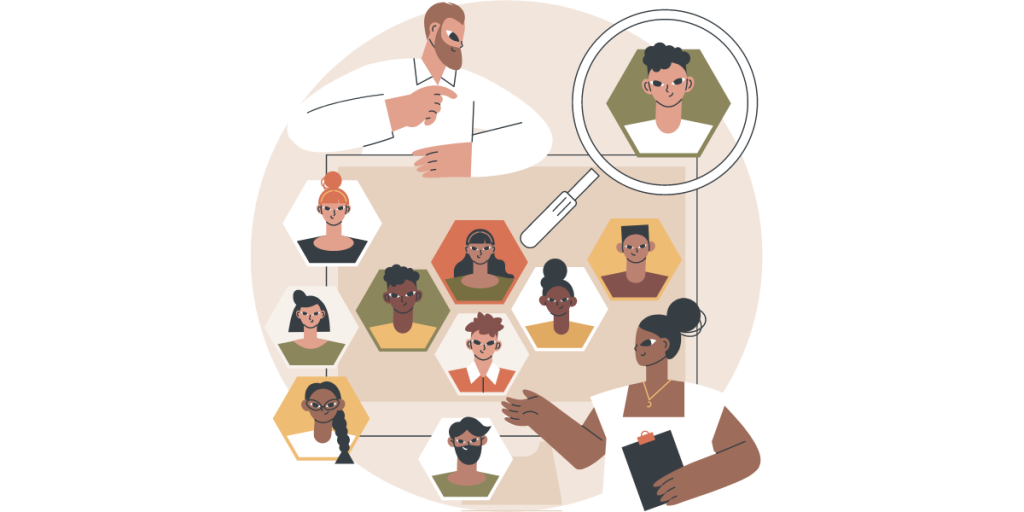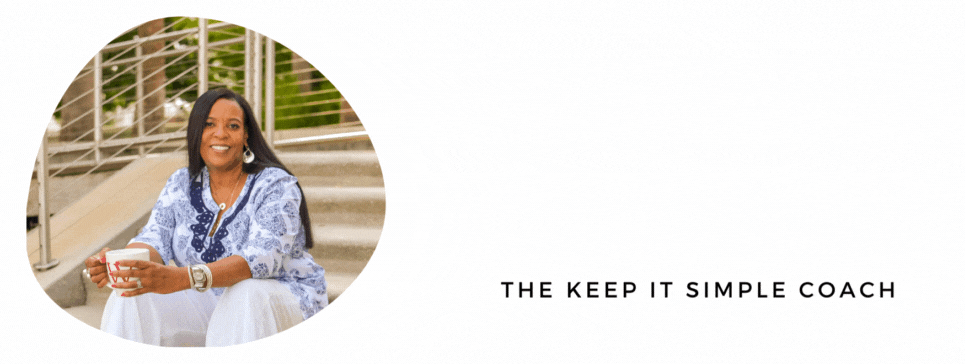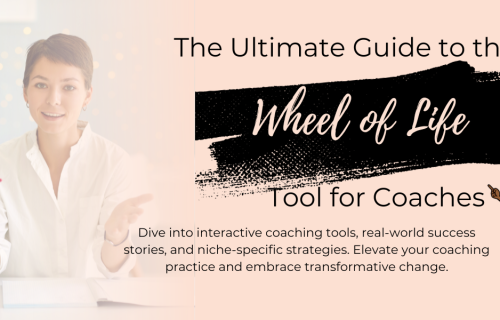
The Ultimate Guide to Content Marketing for Solopreneurs
Hi there, my fellow solopreneur!
If you’re reading this, chances are you have a passion for what you do and you want to share it with the world. You want to make an impact, help others, and grow your brand.
But how do you do that in a crowded and competitive online space?
The answer is content marketing.
Content marketing is the art and science of creating and distributing valuable, relevant, and consistent content to attract and retain a clearly defined audience — and ultimately, to drive profitable customer action.
Sounds great, right?
But maybe you’re wondering:
- What exactly is content marketing?
- Why should I care about content marketing as a solopreneur?
- How do I create a content marketing strategy for my brand?
- How do I write and promote engaging content for my niche?
- Is there a content marketing ecosystem?
Don’t worry, I’ve got you covered.
In this epic blog post, I’m going to teach you everything you need to know about content marketing for solopreneurs, freelancers, creators, and coaches. You’ll learn the basics of content marketing, how to create a content strategy, and how to write and promote engaging content for your audience. Along with introducing you to my ecosystem framework.
By the end of this article, you’ll have a clear understanding of how to use content marketing to grow your brand as a solopreneur.
Ready? Let’s dive in!
What is Content Marketing?
Content marketing is a strategic marketing approach focused on creating and distributing valuable, relevant, and consistent content to attract and retain a clearly defined audience — and ultimately, to drive profitable customer action.
Content can be anything that provides value to your audience, such as blog posts, videos, podcasts, ebooks, webinars, newsletters, social media posts, infographics, case studies, testimonials, etc.
The key word here is value.
Content marketing is not about selling your products or services directly. It’s about providing useful information, education, entertainment, or inspiration to your audience. It’s about solving their problems, answering their questions, or fulfilling their needs.
Content marketing is not about pushing your message out. It’s about pulling your audience in.
Content marketing is not about interrupting your audience with ads. It’s about attracting them with valuable content.
Content marketing is not about one-time transactions. It’s about building long-term relationships.
Content marketing is not about you. It’s about them.
Why Content Marketing Matters for Solopreneurs
As a solopreneur, you’re likely wearing many hats and juggling multiple responsibilities. Content marketing can help you attract new customers and grow your business without having to spend a lot of money on advertising.
By creating valuable content that resonates with your target audience, you can attract potential customers to your website or social media profiles. Once they’re there, you can use calls-to-action (CTAs) to encourage them to take the next step, whether that’s signing up for your email list or making a purchase.
Content marketing also helps you build trust and credibility with your audience. By consistently providing valuable information, you position yourself as an expert in your field. This can lead to more referrals and word-of-mouth business.
You might be thinking: Content marketing sounds nice, but do I really need it as a solopreneur?
The answer is yes. Here are some of the benefits of content marketing for solopreneurs:
- Content marketing helps you attract and engage your target audience. By creating and distributing valuable content that resonates with your ideal clients, you can capture their attention, spark their interest, and earn their trust.
- Content marketing helps you build authority and credibility in your niche. By sharing your knowledge, expertise, and insights through content, you can demonstrate your value proposition,
showcase your results, and position yourself as a leader in your field. - Content marketing helps you grow your brand awareness and visibility. By publishing and promoting quality content on various platforms and channels, you can increase your reach, exposure,
and recognition in your market. - Content marketing helps you generate more leads and sales. By providing valuable content that educates, nurtures, and persuades your audience, you can move them along the buyer’s journey,
from awareness to consideration to decision. You can also use content to upsell, cross-sell, and retain your existing customers. - Content marketing helps you save time and money. By creating evergreen content that lasts for a long time, you can reduce the need for constant advertising or promotion. You can also repurpose your content into different formats or mediums, to maximize its impact and reach.
As you can see, content marketing can help you achieve many of your business goals as a solopreneur.
But how do you get started with content marketing?
How do you create a content strategy that works for your brand?
That’s what we’ll cover in the next section.
How to Create a Content Marketing Strategy for Your Brand
A content marketing strategy is a plan that outlines
- what content you will create,
- why you will create it,
- who you will create it for,
- how you will create it,
- and how you will distribute and measure it.
A content marketing strategy is essential for solopreneurs, because it helps you:
- Define your content marketing goals and objectives
- Identify and understand your target audience and their needs
- Determine your content topics, types, and formats
- Establish your content voice, tone, and style
- Create an editorial calendar and a content production process
- Choose the best platforms and channels to distribute your content
- Set up key performance indicators (KPIs) and metrics to track your content performance
Without a content marketing strategy, you might end up creating random or irrelevant content that doesn’t serve your audience or your brand. You might also waste time, money, or resources on content that doesn’t generate any results.
So how do you create a content marketing strategy for your brand?
Here are 10 key steps I’ve mapped out in detail for you to read and follow:
Step 1: Define Your Content Marketing Goals and Objectives
The first step in creating a content marketing strategy is to define your goals and objectives.
What do you want to achieve with your content marketing?
Your goals and objectives should be specific, measurable, achievable, relevant, and time-bound (SMART).

Some examples of content marketing goals and objectives are:
- Increase website traffic by 50% in the next 6 months
- Generate 100 new leads per month from your blog
- Grow your email list by 1000 subscribers in the next 3 months
- Boost your social media engagement by 20% in the next quarter
- Increase your conversion rate by 10% in the next year
Your goals and objectives should align with your overall business goals and vision.
They should also be realistic and attainable, based on your current situation and resources.
Step 2: Identify and Understand Your Target Audience and Their Needs
The second step in creating a content marketing strategy is to identify and understand your target audience and their needs.
Who are you creating content for?
Your target audience is the group of people who are most likely to benefit from your products or services, and who are most likely to buy from you.
Your target audience might consist of one or more buyer personas, which are semi-fictional representations of your ideal customers, based on data and research.
To create buyer personas, you need to gather information about your target audience, such as:
- Demographics: age, gender, location, income, education, etc.
- Psychographics: interests, hobbies, values, beliefs, motivations, challenges, pain points, goals, etc.
- Behavior: online habits, preferences, sources of information, buying patterns, etc.
You can collect this information from various sources, such as:
- Your existing customers: you can interview them, survey them, or analyze their feedback and reviews
- Your website analytics: you can use tools like Google Analytics to track and measure your website visitors’ behavior and actions
- Your social media analytics: you can use tools like Facebook Insights or Twitter Analytics to monitor and measure your social media followers’ engagement and interactions
- Your email marketing analytics: you can use tools like Mailchimp or ConvertKit to track and measure your email subscribers’ open rates, click rates, and responses
- Your competitors: you can research what kind of content they are creating, who they are targeting, and how they are performing
Once you have collected enough information about your target audience, you can create buyer personas that summarize their characteristics, needs and wants.

For additional information on target audiences, click here.
Step 3: Elevate Your Content Strategy: The Power of a Comprehensive Content Audit
Next, let’s delve into a strategy that can transform the way you engage with your audience, boost your SEO efforts, and breathe new life into your brand’s content – conducting a comprehensive content audit. Buckle up, because we’re about to embark on an exciting journey of uncovering hidden gems, reviving old classics, and strategically refining your content library. Join me as I walk you through the art and science of content auditing, complete with real-world examples and stories that bring the process to life.
The Essence of a Content Audit: Unveiling the Magic
Imagine stepping into a library, where every book represents a piece of content you’ve ever created. Some are well-loved classics, while others gather dust in the shadows. Conducting a content audit is like shining a spotlight on each book, assessing its relevance, impact, and potential. It’s about aligning your content with your current goals, audience preferences, and SEO aspirations. As solopreneurs, freelancers, creators, and coaches, this process empowers you to create a content strategy that’s not just effective, but captivatingly strategic.
Step A: Catalog and Categorize Your Content
Begin by creating a comprehensive inventory of your content. Categorize it based on types, topics, and formats. This catalog is your treasure map, guiding you through the riches of your content library. From blog posts and videos to podcasts and infographics, every piece plays a role in your brand’s narrative.
Example: When I embarked on my content audit adventure, I discovered a treasure trove of blog posts that had faded into obscurity. Several are evergreen gems that held valuable insights that could be repurposed into visually engaging infographics, breathing new life into timeless advice.
Step B: Assess Performance and Engagement
Numbers don’t lie – they reveal the stories your content tells. Dive into analytics to uncover which pieces are thriving and which could use a little TLC. Look at metrics such as page views, bounce rates, time on page, and social shares. This assessment helps you identify the content that resonates most with your audience.
Story: I stumbled upon a video I’d created ages ago. No surprise, it had minimal views (I was not as talented then as I am now). Instead of discarding it, I infused it with new energy. I updated the video’s title, thumbnail, and description, optimizing it for search engines. What result can I expect? A revived video that can boost in views and bring a fresh wave of traffic to my website.
Step C: Relevance Check
As your brand evolves, so does your content’s relevance. Evaluate whether your content still aligns with your current goals, products, or services. Weed out any outdated or irrelevant pieces that no longer contribute to your narrative.
Example: In a content audit I was conducting, I encountered a blog post about a social media platform that had lost its luster. I recommended giving it a modern twist by updating the content with insights about newer platforms. This revamped post can not only garner attention but also showcase their adaptability to changing trends.

Step D: SEO Enhancement
A content audit is a golden opportunity to supercharge your SEO game. Identify high-potential pieces that could benefit from keyword optimization. Update titles, meta descriptions, and headers to align with current search trends. By enhancing your content’s SEO, you’re making it more discoverable to a broader audience.
Story: One of my old blog posts, tucked away in the depths of my website, held insights that were still relevant. I optimized it with strategic keywords, added relevant internal links, and repromoted it on my social media. What can that result in? A significant boost in organic traffic and engagement from new readers.
Step E: Repurpose and Refresh
Don’t let your existing content gather dust – give it a makeover! Repurpose evergreen content into different formats. Transform a blog post into a video, an infographic into a podcast episode, or an old webinar into a series of engaging social media posts.
Example: I had a collection of blog posts that dove deep into a complex topic. Instead of letting them remain in isolation, I bundled them into an eBook. This not only provided a comprehensive resource for my audience but also served as a powerful lead magnet to grow my email list.
Step F: Align with Audience Desires
Your audience’s preferences evolve, and so should your content. Use your content audit insights to tailor your future content creation. Analyze the types of content that garnered the most engagement and focus on producing more of what your audience desires.
Story: After analyzing my content audit data, I realized that my audience responded exceptionally well to in-depth case studies. Armed with this knowledge, I began dedicating more time to researching and creating comprehensive case studies that resonated deeply with my audience’s thirst for actionable insights.
Through the power of a comprehensive content audit, you’ve unearthed hidden treasures, optimized for SEO excellence, and strategically aligned your content with your evolving goals. Now, armed with insights and stories, you’re ready to captivate your audience with a content strategy that’s as dynamic as your brand’s journey.
Step 4: Master A Research and Keyword Strategy for Remarkable Content Marketing
Consider this topic like a compass guiding your content marketing ship towards success – the art of research and keyword strategy. Imagine crafting content that not only resonates deeply with your audience but also grabs the attention of search engines, propelling your brand to new heights. Buckle up as we embark on a journey filled with insights, examples, and stories that unveil the power of strategic research and keywords.
The Research and Keyword Strategy: A Symphony of Insights
Imagine you’re a detective, unearthing valuable clues that lead to your audience’s deepest desires. That’s the essence of research and keyword strategy. It’s about understanding what your audience is searching for, predicting their needs, and crafting content that aligns seamlessly. By using relevant keywords, you’re placing your content on the map for search engines to discover. But how do you unravel this symphony of insights? Let’s break it down.
Step A: Get into Your Audience’s Shoes
Your content should be a solution to your audience’s problems, a guiding light amidst their queries. Start by stepping into their shoes and understanding their pain points, desires, and questions. Dive deep into forums, social media groups, and online discussions related to your niche. Listen to their language, their frustrations, and their aspirations. This initial research is like laying the foundation for a captivating story.
Example: In my journey as a content creator, I decided to delve into the world of solopreneurs. After immersing myself in online communities, I realized that many struggled with time management and how to create good content. Armed with this insight, I crafted content that addressed their challenges, offering practical solutions that resonated deeply.
Step B: The Art of Keyword Research

Keywords are the heartbeats of your content’s discoverability. They’re the words and phrases your audience types into search engines. Tools like Google Keyword Planner, SEMrush, and Ubersuggest are your allies in this quest. Look for keywords that strike a balance between search volume and competition, and ensure they’re relevant to your content’s theme.
Story: I remember when I was creating content about personal branding. My initial keyword was “branding tips,” but my research showed high competition. A little exploration led me to the keyword “authentic personal branding,” which not only had a decent search volume but also aligned better with the depth of insights I was offering. This strategic shift paid off as my content gained traction.
Step C: Long-Tail Keywords: The Gold Mine
While single keywords are essential, don’t overlook the treasure trove of long-tail keywords. These are more specific phrases that often have lower competition and higher intent. Long-tail keywords dig deeper into your audience’s intent, showcasing their readiness to take action.
Example: As I ventured into the realm of entrepreneurial coaching, I targeted the long-tail keyword “how to start a small business .” This phrase not only conveyed the specificity of my content but also attracted individuals looking for tailored solutions, resulting in higher engagement and conversions.
Step D: Competition Analysis
It’s a jungle out there, but don’t worry – your competition holds valuable lessons. Analyze the content of your competitors who are performing well in search engine rankings. Look at the keywords they’re targeting, the angles they’re exploring, and the gaps they might be missing. This not only inspires your content creation but also helps you discover untapped keyword opportunities.
Story: In my exploration of the coaching niche, I stumbled upon a competitor’s blog that was ranking high for “goal-setting techniques.” I noticed they hadn’t covered the aspect of overcoming setbacks while striving for goals. Sensing an opportunity, I am going to craft a detailed post that addressed this aspect. What can result from such work? My content can not only resonate with the audience but also climb the ranks swiftly.
Step E: Crafting Content with Keyword Integration
The secret to effective keyword integration lies in the seamless flow of your content. Avoid overstuffing keywords – focus on natural incorporation that enhances the reader’s experience. Your content should provide value, answer questions, and fulfill the promise your keywords make.
Example: When I wrote a guide on “removing money blockers for entrepreneurs,” I ensured that my content provided a holistic approach to the topic. I naturally integrated keywords like “money obstacles removal techniques” and “managing money as a solopreneur,” enriching the content’s depth while making it search-engine friendly.
????Take Your Journey to Keyword Mastery
That is how you can take a journey that blends the art of research with the science of keyword strategy. By understanding your audience, delving into their needs, and strategically incorporating keywords, you’re not just crafting content – you’re crafting a symphony that resonates with hearts and algorithms alike. As you create content that addresses pain points, fulfills desires, and aligns with search intent, you’re shaping a remarkable content marketing strategy that stands out in the digital landscape.
Step 5: Planning Your Content Types and Formats
Greetings, fellow solopreneurs, freelancers, creators, and coaches! Picture this: a canvas spread before you, ready to transform your creative vision into captivating content. That’s the magic of planning your content types and formats – a pivotal step in your content marketing journey. In this compelling mini-guide, we’re diving into the world of content variety, exploring different formats, and unveiling stories and examples that illustrate the power of strategic planning. Get ready to elevate your content game and captivate your audience like never before!

The Art of Content Variety: An Odyssey of Engagement
Imagine your content strategy as a vibrant mosaic, each piece contributing to the grand narrative of your brand. This mosaic consists of different content types and formats, strategically chosen to cater to diverse audience preferences. From written blogs to captivating videos, engaging podcasts to visually stunning infographics – the possibilities are as endless as your creativity.
Step A: Understand Your Audience’s Preferences
Your audience’s preferences act as a compass guiding your content creation. Conduct surveys, engage in conversations, and analyze engagement metrics to understand what resonates with them. Are they avid readers, or do they prefer bite-sized video content? Do they engage more with practical how-to guides or resonating personal stories? These insights lay the foundation for your content type selection.
Story: In my journey as a coach, I noticed that my audience engaged most with video content that provided practical advice. Armed with this insight, I began creating regular video series where I shared actionable tips, resulting in higher engagement and a growing subscriber base.
Step B: Explore Different Content Formats
Diversity is the heartbeat of engaging content. Consider various formats to present your ideas. Blogs provide in-depth exploration, videos add a personal touch, podcasts offer on-the-go wisdom, and infographics simplify complex concepts. Each format has its strengths, allowing you to cater to different learning styles and consumption habits.
Example: I ventured into the realm of holiday promotional advice. While my blogs covered comprehensive strategies, I decided to experiment with a podcast series. These audio episodes not only reached commuters and multitaskers but also created a sense of connection through the intimacy of the medium.
Step C: Align Formats with Your Message
Different formats convey different tones and messages. Align your content format with the essence of your message. Serious and in-depth topics might resonate better in a long-form blog or podcast, while light-hearted updates can shine in quick social media posts or videos.
Story: When I wanted to address a pressing industry issue like building a social media audience, I opted for an informative webinar. The extended format allowed me to dive deep into the topic, presenting research, case studies, and Q&A. This approach not only showcased my authority but also attracted engaged participants seeking detailed insights.
Step D: Repurpose with Purpose
The power of repurposing lies in giving your content new life. Transform a blog post into a captivating video, a webinar into an eBook, or a podcast into bite-sized social media snippets. Repurposing allows you to reach new audiences while maximizing the value of your existing content.
Example: I had a series of informative blog posts that remained relatively unnoticed. With a stroke of inspiration, I transformed them into an engaging email course. This repurposed content not only nurtured my email subscribers but also introduced a fresh audience to my insights.
Step E: Embrace a Consistent Schedule
Consistency is the heartbeat of content marketing success. Once you’ve identified your preferred content types and formats, establish a publishing schedule that works for you and resonates with your audience. Whether it’s weekly blog posts, bi-monthly podcasts, or monthly videos, maintaining a steady rhythm keeps your audience engaged and eagerly awaiting your content.
Story: I committed to a weekly live-stream biz tips series where I shared personal anecdotes and tools from my coaching business. Not only did this consistent schedule boost my credibility, but it also established a sense of anticipation among my audience, resulting in higher engagement rates.
????Your Content Palette Awaits
You’ve unlocked a world of content brilliance through strategic planning of your content types and formats. By understanding your audience, experimenting with various formats, and aligning them with your message, you’re sculpting a narrative that captivates, educates, and resonates. Remember, content variety doesn’t just engage your audience – it empowers you to share your story in the most compelling and relatable way possible.
Step 6: Crafting Consistency by Creating a Content Calendar
I’d like you to think of this topic that’s like a well-tuned orchestra conductor for your content marketing journey – creating a content calendar. Imagine having a clear roadmap that guides your content creation, ensures consistency, and keeps your audience eagerly anticipating your next masterpiece. In this exciting mini guide, we’re going to unveil the magic of a content calendar, exploring the steps to build one that aligns seamlessly with your brand’s rhythm. Get ready to embark on a journey that transforms your content strategy into a symphony of engagement and impact!
Step A: Set Your Content Goals and Objectives
Picture this: you’re standing at the base of a mountain, ready to embark on a thrilling adventure. Before you start climbing, define your destination. What are your content goals and objectives? Are you aiming to increase website traffic, grow your email list, establish authority, or launch a new product? These objectives guide the content you’ll create and determine the frequency of your posts.
Story: As a coach, I wanted to establish myself as an industry thought leader. So, I’ve set a content goal to publish an in-depth guide once a month. Each guide tackles a specific aspect of my coaching niche, from content strategies to social media tips. This goal provided direction and ensured I consistently shared valuable insights.
Step B: Understand Your Audience’s Needs
Every artist tailors their work to their audience’s preferences, and content creation is no different. Dive deep into your audience’s desires, challenges, and questions. What are they searching for? What problems are they trying to solve? This understanding is the palette from which your content ideas will spring.
Example: I delved into the world of freelancing and discovered that many aspiring freelancers struggled with finding clients. Armed with this insight, I can create a content series that offered step-by-step guidance on prospecting, pitching, and securing freelance gigs.
Step C: Choose Your Content Themes and Topics
Imagine your content calendar as a gallery showcasing your expertise. Determine the overarching themes and topics that align with your brand and audience. Whether it’s a month of productivity tips, a deep dive into a specific skill, or a series of client success stories, each theme provides a structure for your content journey.
Story: In my coaching niche, I chose to dedicate a month to “Goal Setting and Achievement.” Throughout that month, I crafted content that explored different facets of setting and achieving goals – from mindset shifts to practical strategies. This thematic approach created a cohesive narrative that resonated deeply.
Step D: Define Your Content Formats
Your content calendar is a canvas for diverse formats to shine. Will you create blog posts, videos, podcasts, or a combination of these? Tailor your format selection to your audience’s preferences and your strengths as a creator. A mix of formats keeps your content engaging and caters to different learning styles.
Example: I decided to blend written content with live streaming in my content calendar. While I enjoyed crafting in-depth blog posts, I recognized the power of visual storytelling. By including videos, I reached a broader audience and added a personal touch to my brand’s narrative.

Step E: Establish Your Publishing Schedule
Consistency is the heartbeat of a successful content strategy. Once you’ve determined your content themes, topics, and formats, it’s time to establish a publishing schedule. Will you post weekly, bi-weekly, or monthly? Choose a frequency that’s sustainable for you while catering to your audience’s appetite for fresh content.
Story: I committed to a monthly publishing schedule for my blog posts. Every 1st Monday, my audience knew they could expect a new piece of valuable content. This consistency not only kept my audience engaged but also improved my search engine rankings over time.
Step F: Create Your Content Calendar Tools
Now that you’ve planned your content, it’s time to choose your content calendar tools. Whether you prefer digital tools like Google Calendar, Trello, or Asana, or if you’re a fan of old-fashioned paper planners, the key is to have a system that keeps you organized and accountable.
Example: I embraced a digital tool – Trello – to create my content calendar. Each theme had its own board, and within it, I listed topic ideas, content formats, deadlines, and progress. This visual approach helped me stay on track and monitor my content’s development.
????The Unveiling Your Content Symphony
You’re now equipped with the art of creating a content calendar! By setting goals, understanding your audience, choosing themes, defining formats, establishing a schedule, and utilizing the right tools, you’re crafting a masterpiece that resonates with hearts and algorithms alike. Your content calendar is like a musical score, guiding you through a harmonious journey of engagement, consistency, and brand growth.
Step 7: Unveiling Your Brand Symphony: Crafting a Unique Voice and Style for Content Marketing
Hello there, fellow solopreneurs, freelancers, creators, and coaches! Today, we’re diving into a topic that’s like composing your brand’s symphony – developing a distinctive voice and style for your content marketing. Imagine captivating your audience with content that’s not just informative but resonates with authenticity. In this exciting mini-guide, we’ll explore the art of crafting a brand voice that speaks to your audience’s hearts and a style that makes your content instantly recognizable. Get ready to embark on a journey of creative expression that transforms your brand’s narrative into a harmonious masterpiece!
Step A: Define Your Brand’s Personality
Think of your brand as a living being – what personality traits would it possess? Is it playful, serious, inspirational, or down-to-earth? Defining your brand’s personality forms the cornerstone of your voice and style. Every word, every sentence, and every interaction should embody these traits.
Story: As a freelancer specializing in wellness coaching, I embraced a nurturing and motivational brand personality. Every piece of content I created – whether it was a blog post or a social media caption – resonated with empathy and encouragement, reflecting my brand’s caring essence.
Step B: Understand Your Audience’s Language
Just as a symphony resonates differently with various audiences, your content should speak your audience’s language. Dive into the conversations happening in your niche. What phrases do they use? What expressions resonate? Mirror their language to create an immediate connection.
Example: In my coaching journey, I discovered that my audience of solopreneurs appreciated straightforward, no-nonsense language. By adopting their lingo and addressing their pain points head-on, I established a rapport that felt like a genuine conversation.
Step C: Craft a Brand Voice Guide
Creating a brand voice guide is like composing sheet music – it provides guidelines for consistent communication. Define your brand’s tone – is it casual, professional, or a mix of both? Outline the words and phrases to use and avoid. This guide ensures that anyone creating content for your brand maintains its unique voice.

Story: I crafted a comprehensive brand voice guide that not only outlined the words to use but also included examples of how these words would be used in different contexts. This guide became my content compass, ensuring a consistent tone across all platforms.
Step D: Inject Personality and Emotion
Imagine infusing your content with emotions that resonate deeply with your audience. Share personal anecdotes, stories, and experiences that showcase your brand’s human side. People connect with stories, and weaving these into your content helps humanize your brand.
Example: While discussing productivity tips for freelancers, I shared a personal story of a challenging project that taught me the importance of time management. This vulnerability not only engaged my audience but also showcased the real struggles and triumphs behind my advice.
Step E: Strive for Consistency
Consistency is key to establishing a recognizable brand. Imagine a symphony that shifts between genres – it might confuse the audience. Similarly, your brand voice and style should remain consistent across all platforms, from your website to social media to email marketing.
Story: I was determined to maintain consistency across my content channels. Whether it was a tweet, a blog post, or a podcast episode, I ensured that the tone, language, and messaging reflected my brand’s personality. This consistency became a hallmark of my content strategy.
Step F: Evolve with Your Audience
Just as a symphony evolves, so should your brand’s voice and style. Stay attuned to your audience’s reactions and feedback. Are they responding positively to certain aspects of your voice? Are there changes in their preferences? Adapt and refine your voice as your audience grows.
Example: Over time, I noticed my audience resonated more with personal stories and anecdotes. This insight led me to incorporate more relatable stories into my content, creating a deeper connection with my audience and enhancing engagement.
????Your Brand’s Harmonious Expression
You’ve uncovered the art of developing a unique voice and style for your brand’s content marketing! By defining your brand’s personality, understanding your audience’s language, crafting a brand voice guide, infusing personality, maintaining consistency, and evolving with your audience, you’re creating a symphony of content that resonates deeply. Your brand’s voice and style are like musical notes that create a harmonious connection with your audience, leaving a lasting impression that goes beyond words.
Step 8: Unveiling the Art of Distributing and Promoting Your Content
We’re diving into a realm that’s like a grand stage – distributing and promoting your content. Imagine your content shining brightly, reaching eager eyes, and resonating with hearts. In this exhilarating mini-guide, we’ll unravel the secrets of strategic distribution and promotion that amplify your brand’s voice and maximize your impact. Get ready to step into the spotlight and master the art of getting your content seen and shared!
Step A: Understand Your Audience’s Hangouts
Imagine your content as a guest at a party – where would it thrive? To effectively distribute your content, identify the platforms where your audience hangs out. Are they active on social media? Do they frequent specific online forums or communities? By understanding their digital habitats, you can ensure your content meets them where they are.
Story: In my freelancing journey, I realized that my audience was highly engaged on LinkedIn. So, I tailored my content distribution strategy to focus more on this platform. This shift led to increased engagement, shares, and ultimately, more visibility.
Step B: Tailor Your Content to Each Platform
Just as a theater performance varies depending on the stage, your content should be adapted for each platform. What works on Instagram might not resonate on LinkedIn. Tailor your content to the unique characteristics of each platform while maintaining your brand’s voice and message.
Example: I created a detailed blog post about time management for solopreneurs. When promoting it on Instagram, I transformed key points into visually appealing graphics. On LinkedIn, I shared a snippet and encouraged discussions around productivity challenges faced by fellow solopreneurs.

Step C: Collaborate and Cross-Promote
Imagine your content as a duet, harmonizing with other creators. Collaborate with influencers, fellow creators, or complementary businesses. Cross-promotion introduces your content to new audiences while enriching your partner’s content strategy.
Story: I collaborated with a fellow coach on a webinar about work-life balance. We each promoted the webinar to our respective audiences, resulting in increased registrations and engagement. This cross-promotion not only expanded our reach but also showcased our commitment to delivering value.
Step D: Harness the Power of Email Marketing
Your email list is like a VIP circle – a group eager to hear from you. Leverage email marketing to distribute and promote your content directly to your most engaged audience. Craft compelling subject lines and snippets to entice recipients to open and engage with your content.
Example: I sent out a weekly newsletter to my subscribers, sharing my latest blog posts, podcast episodes, and any exciting updates. By personalizing the subject line and including a teaser of the content, I consistently achieved high open rates and click-through rates.
Step E: Embrace the Magic of SEO
Imagine your content as a trail of breadcrumbs leading your audience to your digital doorstep. Search engine optimization (SEO) ensures your content ranks high in search results. Conduct keyword research, optimize headings and meta descriptions, and create high-quality, relevant content that addresses your audience’s needs.
Story: When I focused on optimizing my blog posts for SEO, I saw a significant increase in organic traffic. One of my posts about “effective client communication” started ranking on the first page of search results, leading to a steady stream of new visitors.
Step F: Leverage Paid Advertising Wisely
Paid advertising is like a spotlight on your content. Use platforms like Google Ads or social media advertising to reach a targeted audience. Ensure your ads align with your content’s message and intent, and monitor their performance to make data-driven optimizations.
Example: For a webinar about personal branding, I invested in Facebook ads targeting professionals and entrepreneurs interested in personal development. The ads included compelling visuals and highlighted the value participants would gain from the webinar. This strategic investment led to a substantial increase in registrations.
????Your Content’s Grand Debut
You’ve unlocked the secrets of distributing and promoting your content! By understanding your audience’s hangouts, tailoring content for each platform, collaborating and cross-promoting, harnessing email marketing, embracing SEO, and leveraging paid advertising wisely, you’re ensuring your content receives the grand debut it deserves. Just like a theatrical performance, your content’s success depends on strategic staging and promotion.
Step 9: Foster Engagement and Interaction with Your Audience
I’m thrilled to dive into a topic that’s like kindling for the fire of your brand’s success – fostering engagement and interaction with your audience. Imagine a vibrant community of followers eagerly interacting with your content, sharing their thoughts, and igniting discussions. In this exhilarating mini-guide, we’re going to explore the art of creating meaningful connections, encouraging dialogue, and cultivating a loyal tribe. Get ready to embark on a journey that transforms your content strategy into an engaging conversation that sparks lasting relationships!
Step A: Listen to Your Audience’s Voices
Imagine engaging with your audience as you would with a close friend – by actively listening. Pay attention to comments, messages, and feedback on your content. What questions are they asking? What challenges are they facing? By tuning in, you gain invaluable insights into their needs and desires.
Story: In my journey as a coach, I noticed a recurring theme in the comments on my posts – many solopreneurs struggled with time management. This insight led me to create content focused on this challenge, resulting in higher engagement and appreciation from my audience.
Step B: Spark Conversations with Provocative Questions
Just as a thought-provoking question can spark a captivating conversation, the same applies to your content. Craft questions that challenge your audience’s perspectives, encourage them to share their experiences or inspire them to think deeper about a topic.
Example: In a post about overcoming self-doubt, I asked my audience, “What’s the boldest step you’ve taken despite your inner critic’s doubts?” This question not only initiated discussions but also created a sense of camaraderie among those who shared their stories.
Step C: Encourage User-Generated Content
Imagine your audience as co-creators of your content journey. Encourage them to share their experiences, testimonials, or success stories related to your products or services. User-generated content not only showcases your impact but also fosters a sense of community.

Story: As a creator, I invited my audience to share photos of themselves using their favorite biz product while working. This not only led to a boost of engaging visuals but also demonstrated the versatility of biz products through real-life examples.
Step D: Host Live Q&A Sessions
Imagine hosting a virtual coffee chat with your audience – that’s the magic of live Q&A sessions. Whether on social media platforms or through webinars, live sessions provide a direct channel for your audience to ask questions, seek advice, and engage in real-time conversations.
Example: A client conducted a live Q&A session on Instagram where they answered questions about productivity and time management. The session garnered a lot of engagement, with participants not only seeking advice but also engaging in discussions with each other.
Step E: Respond Promptly and Thoughtfully
Imagine a back-and-forth conversation with a friend – that’s the level of engagement your audience craves. Respond promptly and thoughtfully to comments, messages, and emails. Acknowledge their input, address their questions, and express genuine gratitude for their engagement.
Story: A follower left a heartfelt comment on my post about overcoming imposter syndrome, sharing their own struggles and how my content had resonated. I responded with a personalized message, thanking them for their openness and offering additional resources. This interaction not only deepened our connection but also encouraged them to engage further.
Step F: Celebrate Milestones and Achievements
Imagine your audience as collaborators in your success story. Celebrate their milestones and achievements – whether it’s hitting a goal, launching a project, or overcoming a challenge. Recognizing their successes not only shows your genuine support but also reinforces a positive community culture.
Example: When a follower shared that they secured their first client after implementing my strategies, I celebrated their achievement with a dedicated post, applauding their dedication and sharing their journey. This gesture not only boosted their morale but also showcased the tangible impact of my content.
????Sparking Lasting Connections
You’ve unlocked the secrets of fostering engagement and interaction with your audience! By listening to their voices, sparking conversations, encouraging user-generated content, hosting live Q&A sessions, responding thoughtfully, and celebrating milestones, you’re creating an engaged community that’s more than just followers – it’s a family of supporters, collaborators, and friends. Just like a heartfelt conversation, your content strategy should be a two-way street, where your audience’s thoughts and contributions are valued and celebrated.
Step 10: Analyze, Refine, and Optimize
Here’s a topic that’s like fine-tuning your masterpiece – analyzing, refining, and optimizing your content. Imagine your content strategy as a living, breathing entity, constantly evolving to better serve your audience and achieve your goals. In this invigorating mini-guide, we’ll explore the journey of content improvement, diving deep into the process of analysis, the art of refining, and the magic of optimization. Get ready to embark on a transformational journey that ensures your content not only stands out but also resonates deeply!
The Dance of Analysis: Unveiling Insights
Imagine analyzing your content like a treasure hunt for insights. The first step in the journey is to understand what’s working and what could use a touch of refinement. Dive into your analytics – from website traffic to engagement metrics to social media performance. What content has garnered the most attention? Which pieces have fallen under the radar?

Story: In my journey as a coach, I noticed that my blog posts on time management consistently received higher engagement and shares. This insight led me to analyze the reasons behind their success and brainstorm ways to replicate it in other content.
The Art of Refinement: Polishing Your Craft
Imagine your content as a sculptor’s clay, ready to be molded into perfection. After analyzing, it’s time to refine. This step involves enhancing the elements that resonate and reconsidering those that might need adjustment. It’s about digging deeper into the core of your content and enhancing its value.
Example: I revisited a blog post that generated decent traffic but lacked engagement. Upon closer examination, I realized the introduction was weak and didn’t effectively hook the reader. By reworking the introduction and adding a relatable anecdote, the post’s engagement can now increase significantly.
The Magic of Optimization: Elevating Impact
Imagine optimizing your content like a conductor fine-tuning an orchestra’s performance. This step involves taking what’s already brilliant and enhancing it further to maximize its impact. From SEO optimization to A/B testing to enhancing visuals, optimization ensures your content reaches its full potential.
Story: I decided to optimize a landing page for my coaching services. By conducting A/B tests with different headlines and calls-to-action, I discovered that a more specific headline and a compelling call-to-action led to a higher conversion rate, showcasing the power of optimization.
Consistency as the North Star
Imagine analyzing, refining, and optimizing as the rhythm of your content strategy. Consistency is the compass that keeps your journey on track. Regularly assess your content’s performance, refine based on insights, and optimize for better results. This consistent cycle ensures that your content remains relevant, engaging, and aligned with your audience’s evolving needs.
Example: Every quarter, I set aside time to review my content strategy. I analyze engagement metrics, identify high-performing content, and brainstorm ways to optimize underperforming pieces. This consistent practice not only keeps my content fresh but also maintains a dynamic connection with my audience.
Innovate, Iterate, Elevate
Imagine your content strategy as a canvas, inviting you to paint new strokes of innovation. The journey of analyzing, refining, and optimizing isn’t a one-time process – it’s a dynamic cycle of continuous improvement. As your audience evolves and trends shift, your content should adapt and innovate to stay relevant and impactful.
Story: I started a podcast as an extension of my content strategy. After a few episodes, I analyzed listener feedback and realized that my audience enjoyed the personal anecdotes I shared. I refined the podcast format to include more personal stories, resulting in increased engagement and loyalty.
Your Content Symphony
You’ve unveiled the art of analyzing, refining, and optimizing your content! By diving into analysis, embracing the art of refinement, harnessing the magic of optimization, prioritizing consistency, and fostering innovation, you’re orchestrating a content symphony that resonates deeply with your audience. Just like a composer refining musical notes, your journey of content improvement is a creative process that elevates your impact and connection.
Adopt A Content Marketing Framework
Writing and creating engaging content involves several key elements:
- Know your audience. Understand who you’re writing for and what they care about. This will help you create content that resonates with them.
- Provide value: Make sure your content provides value to your audience by helping them solve their problems or achieve their goals.
- Be authentic: Write in a voice that’s true to who you are and what your brand stands for.
- Use storytelling: People love stories. Use storytelling techniques to make your content more engaging and memorable.
- Include visuals: Use images, videos, infographics, or other visuals to make your content more visually appealing.
And depending on your business type, your skills and abilities, and most importantly, your content marketing strategic plan; one or more of the ecosystem elements will help you grow your business.

You don’t have to be great at all of them. I always suggest getting good a one and building on that. And of course, you get to decide whether this is work you want to do it yourself (DIY), done with you (DWY) or get some help through a consultant/agency (DFY). Either way, just remember

In upcoming articles, I will be breaking down each of the Content Marketing Ecosystem elements:
These are working titles and might change:
- The Power of Blogging for Content Marketing
- The Social Media Symphony: Amplify your reach through strategic social media engagement.
- Landing Pages that Convert: Craft landing pages that entice and convert your visitors and consumers.
- Mastering Podcast Guesting: Leverage podcasts to share your expertise and expand your audience.
- Automate and Elevate with Email: Discover the power of automated email campaigns in nurturing leads.
- Creative Visuals Unveiled: Explore the art of creating irresistible lead magnets, effective webinars and eye-catching infographics that build your email list.
In conclusion, content marketing is a powerful tool for solopreneurs looking to attract new customers and grow their businesses. By creating valuable and relevant content that resonates with your target audience, you can build trust and credibility while driving profitable customer action.
I hope this helps get you started on your content marketing efforts.
Don’t forget to join me you and fellow solopreneurs over in my community Content Creation Tips and More Facebook group – it’s FREE! Full of goodies, a video library of tips, and more!

Congratulations, you’ve embarked on a journey that leads to content marketing excellence. By following these comprehensive steps, you’re not only creating content but crafting a strategy that resonates with your audience, aligns with your business goals, and propels your brand to new heights. So, let’s unleash the power of content marketing and watch your brand’s story captivate hearts, minds, and screens everywhere. Your path to content marketing success starts here!
Hey, share your thoughts and ideas directly in the comments. You never know how your words will connect with others that visit my site. Remember, being a business owner doesn’t mean you have to do it alone 🙂




